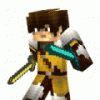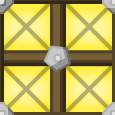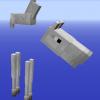Content:
Slate
Blackcurrant
Watermelon
Strawberry
Orange
Banana
Apple
Emerald
Chocolate
Marble
Background:
Slate
Blackcurrant
Watermelon
Strawberry
Orange
Banana
Apple
Emerald
Chocolate
Marble
Pattern:
Blank
Waves
Notes
Sharp
Wood
Rockface
Leather
Honey
Vertical
Triangles
Welcome to TerraFirmaCraft Forums
Register now to gain access to all of our features. Once registered and logged in, you will be able to contribute to this site by submitting your own content or replying to existing content. You'll be able to customize your profile, receive reputation points as a reward for submitting content, while also communicating with other members via your own private inbox, plus much more! This message will be removed once you have signed in.
-
Announcements
-

ATTENTION Forum Database Breach 03/04/2019
There has been a breach of our database. Please make sure you change your password (use a password manager, like Lastpass).
If you used this password anywhere else, change that too! The passwords themselves are stored hashed, but may old accounts still had old, insecure (by today's standards) hashes from back when they where created. This means they can be "cracked" more easily. Other leaked information includes: email, IP, account name.
I'm trying my best to find out more and keep everyone up to date. Discord (http://invite.gg/TerraFirmaCraft) is the best option for up to date news and questions. I'm sorry for this, but the damage has been done. All I can do is try to make sure it doesn't happen again. -

This forum is now READ ONLY! 01/20/2020
As of this post and forever into the future this forum has been put into READ ONLY MODE. There will be no new posts! A replacement is coming SoonTM . If you wish to stay up-to-date on whats going on or post your content. Please use the Discord or Sub-Reddit until the new forums are running.
Any questions or comments can be directed to Claycorp on either platform.
-
Search the Community: Showing results for tags 'mining'.
Found 15 results
-

Roanoke 6 Challenge Server, modified build 77 with several new features.
Bbushh posted a topic in Servers
Roanoke 6......Challenge Server. If you are up for something very different and very challenging consider joining us on the Roanoke 6 Challenge Server. Using a tweaked Build 77 of the most excellent TerraFirmaCraft mod our programmer has adapted many new features that add to the immersion of the best mod in Minecraft.....to name a few: 1. Travel faster on cobblestone roads. 2. Find ore veins that expand, contract, branch, and fade out suddenly....they also sometimes have a few blocks of other appropriate ores embedded in them. 3. Use the sluice to find clasts (small insignificant bits of ore) to locate valuable minerals and ores. 4. Find zones of abundant ores and minerals and other areas that have doodley-squat!....(hint; the further north you go, the more chance to strike it rich)..... 5. Propick too op?.....ours only reveals the presence of minerals, not the type.......very tricky..... 6.Tool durability and speed are both reduced so no more building tunnels to avoid the surface....what are we, Morlocks?.....(fortunately tnt can be bought at Spawn for a few paltry coins)...... 6. More believable tree growth.....it might take weeks of real time for trees to grow. 7. An in game server economy founded on a presumed external market......many things can be sold and the money used to buy land and helpful things....like better boats and airships!! 8. No more smacking grass to find plants.....each different plant grows in a very few places and finding them is tough, but worth it. 9. Gems can be used to enchant items but they no longer drop willy-nilly when you are mining or pop randomly from a sluice.....you have to find the sedimentary beds where they lie, so we hope your favorite song is "sluicing in the dirt for diamonds"...... 10. Kimberlite can be found in distinct pipes, and other sedimentary minerals can be found in stratified beds. 11. Even the grass is against you as it slows your movement!.....the only solution is to build some roads or railroads….maybe even buy an airship….. 12. Have you ever wondered how a chest actually works without any hinges?....wonder no more because we now require you to provide metal hardware for many of the recipes. You can find the clay mold in the crafting screen….now you have a use for all that copper. Consider this....the server has been online for over a year and we are still using iron tools......there is graphite and kaolinite out there but where?...... Enjin SIte:https://roanoke.enjin.com/ Dynamic Map:http://69.195.134.12:8123/# Look for the pack on Technic. -
Our ore system is currently a lot simpler than it is really. Here is a few ideas to make it more accurate Crushing; ores should be first crushed to remove rock from the ore and leave fine metal powder. This should be done with a hammer and later a possible crusher (mechanical or magical). You will then be left with raw ore dust. melting methods; the current (tfc 1) start game method makes sense and I like it (hopefully so do you). However steel is sometimes much easier to make, however the steel made in these ways are used differently. Example: katanas are made of a multi part billet made from iron dust poured into a clay tube full of burning coal or charcoal. The tube is then tapped at the bottom to allow the metal to flow out. This creates a clump of slag and metal at the base, similar to a bloom however containing steel. The steel is grade separated then arranged into the katana ingot which is worked into a sword. this is one of many ways to make steel however it creates a different form. These different types of steel are interesting and could have their uses in tfc 2 (like a katana). So we could have many metal tech trees if you will. Like Damascus (in the Middle East), oriental (east Asian), industrial (European) and magic stuff (bone steel?) point is their are many ways to create metal from dust but we can only have a few: Damascus (mixed metal steels) mostly alloys made the current way however, including a casted "steel" made of bronze and iron and charcoal dust, this type can be the easiest to make and the cheapest however is not as strong as the other methods. Oriental (most expensive) lots of work, little output however, the strongest product with out spells. European (blast furnace (current steel)) most efficient way to make steel however has lots of setup and is meant for mass production of an okay product. Magic (magical?) its magic so its different and should envolve death and sacrifice and such. rolling and sheets: rolling machines can be used instead of forging to create sheets late game by using mechanical power or some magic motor. basically you run a double ingot into the machine cold a few times (make it a worked item with a progress bar, 10% each time) this just makes things faster thanks for reading, now discusse please
-
Assuming that youdo add mining and ore into tfc2, getting it that ore would spawn in veins would be difficult but worth it i've been messing around with vein miner in tfc1 and i noticed veins actually spawn in tall towers in the ground https://imgur.com/a/uRgk5(because the image is to large) To spice mining up a bit i would suggest getting ore veins to spawn in a cave like manner so it can even cover long distances this would be by no means easy but it would make mining more of a challenge when mining
-
Disclaimer: First of all, I would like to say that I am not claiming to have been the first one ever to come up with this mining method. Being that Terrafirmacraft is such a great mod, played by so many people, it would be absolutely pretentious of me to claim such a thing. I merely want to share with the community a mining method that I have found to be quite useful. The purpose of this guide is to show a method of using support beams that I have found to be the one that allows to get the most ore out of a vein, both minimizing the cave-in risk and minimizing unnecessary mining. First of all, a very brief overview of how support beams work. For this part, I assume that you understand the basics about support beams, since I will just point out a few characteristics that will be relevant for my later explanation. As I’m sure most of us know, a single horizontal support beam (exemplified by the light-colored beam in the screenshots) will support any gravity-affected block up to four blocks away from it in the X and Z directions, on the same Y level as the beam, one above and one below. That is, a 9x9x3 area centered on the horizontal support beam. Now, the beauty of support beams, and what makes possible this method, is that they can be stacked. By this, I mean that vertical support beams can be placed on top of already existing support beams (on top of vertical or corner support beams that is, not horizontal). Therefore, a second horizontal support beam placed three blocks above the original one will stack its own 9x9x3 area-of-effect on top of the first one’s area, together creating a 9x9x6. Of course, a third one can be placed three blocks above that second one, etc. etc. You get the point. Now, with this in mind, let’s see how it can be applied to getting the most out of an ore (or mineral) vein. 1. Locating the center of a vein If you already know how to find the center of a vein, you can skip this whole section, and jump straight to section 2. So, this is not exactly the main focus of my guide, since I mainly want to address the use of support beams, but it will be necessary to know where the center of a vein is. Therefore, I will explain how to find the center, but the same disclaimer I mentioned before applies here. First of all, you’ll want to start somewhere that you know is close to, or around the area of an ore or mineral vein. Those little surface nuggets are a great hint, as I’m sure you all know. Random hits with a prospector’s pick will also do the job, but that uses up pick durability. However, minerals (i.e. kaolinite, graphite, sylvite, etc.) don’t have surface nuggets, so pro-pick will be your only option in these cases. Once you found those nuggets, give the floor a tap with your pro-pick. Ideally, you want to see a message of the type “found X of Y” (where “X” will be “traces”, “small sample”, “medium sample”, etc., and “Y” will be the name of the ore or mineral). If you get “nothing found”, check around the area, you may be a few blocks away. In case that, despite having surface nuggets, you don’t get any reading anywhere in the area, then your vein is too deep underground to be detected by surface readings. I won’t discuss in detail how to find the vein’s center in that case, but it’s not so different as with surface readings, it’s just more hassle. Once you got this initial spot, check a couple of blocks away from it trying to determine in which direction the readings grow (both on the X axis as in the Z axis) and in which direction they decrease. Ideally, you want to find an area where you get “found a very large sample of Y”. This new reading will be your new starting point. If you didn’t find any “very large sample”, just take as your new starting point whichever your higher reading was. It is possible that you only find “traces”, don’t worry about it. You can now forget about your original starting point, you won’t be using it anymore. Now, find the limits of your reading. That is, find where your “very large sample” turns into “large sample”, on both axes, and mark those points. Also, keep in mind that going up or down blocks on the Y axis will alter your readings. Once you’ve marked the four limits, find the center of it all by dividing the distance between both ends of both axes. Eureka! You’ve just found the center of the vein. 2. Choosing the best support beam configuration The process I described above for finding the center of the vein not only gives you the center, but it also gives you an idea of the size of the vein, i.e. its approximate diameter. Not all veins are equally large, and choosing a support beam configuration will depend on assessing which one is best for the size of your vein. You don’t want to choose a small configuration for a large vein (this would waste ore), nor a large configuration for a small vein (this would waste support beams). Let’s take a look at the four support beam configurations that I think could be used in most veins. They are presented in a scale from smallest to largest. A. Single The most basic support beam configuration is two vertical beams and one horizontal. Since “support beams can only be placed horizontally between two vertical beams that are up to 5 blocks apart,” the best way to maximize this single-beam configuration is, obviously, to take full advantage of the five-block-max span for the horizontal beam. This results in a 13x9 footprint of supported blocks (a 117 block area). In the screenshot I have marked the footprint outline with planks. (The double-tall fencepost is the center of my vein) B. Double If you want to step up your coverage, you can go with what I call a “double support beam.” This is three verticals and two horizontals, where the both horizontals share a vertical. This adds 6 rows to the footprint (3 on each side), which results in a 19x9 (171 block area). In the screenshot I’ve left the planks marking the footprint of the single-beam, so as to more easily compare the increase. The new outline is marked with one-tall vertical support beams. Notice that this footprint comes quite close to the torches that mark the limit of my “very large sample” reading. This doesn’t mean that past these torches there will be no ore, but it does mean that most ore will be in the space inside the area bound by the torches. C. Cross-shaped This is one type of combination of two Doubles. Here, four horizontals share one vertical. This adds 10 rows, each one 9 blocks wide. It’s harder to describe since it’s not a rectangular shape, but check the screenshot. This configuration covers a 261 block footprint. The downside of this configuration is that it overlaps coverage, so it is not ideal, it doesn’t maximize its support beams. D. Double Squared This one, the largest one, is basically two Doubles put side by side so as not to overlay at all, but also not to leave a gap unsupported. It’s a 19x18, a 342 block footprint. The different-colored planks in the screenshot outline both areas of effect. This is a comparison with the Cross-shaped area of effect. So, these are the configurations among which, in my opinion, you should choose. Any bigger than the Double Squared would be a waste, since veins aren’t really that big. Now, which one to choose will totally depend on how big your vein is and how much you want that ore or mineral. For example, for rich hematite/limonite/magnetite, you’ll definitely want the Double Squared, even if it’s a somewhat small vein, since iron, and especially rich iron, is a prime resource in TFC. For my illustration, I’ve gone with the Double Squared, mainly because sylvite is quite rare (it only generates inone type of rock). 3. Implementing the chosen support beam configuration Once you've chosen one of the configurations, it’s time to implement it below ground! As I said before, this implementation method capitalizes on the fact that support beams can be stacked on top of each other. a. Vertical beams Now, make sure you have a lot of beams in your inventory (between 1 and 2 stacks should do the trick), choose any of the vertical beams of your configuration, and, on that spot, start digging straight down! “Straight down” you may ask? Yes, indeed, straight down! I'm perfectly aware that this is generally considered a no-no in Minecraft, but actually, in Terrafirmacraft it’s not such a bad idea. In TFC you don’t have those vanilla lava pockets, which are the biggest risk with digging straight down, and you do have the upside of virtually avoiding any cave-in risk, since you are not removing any block from underneath another (as you would if you dug a staircase instead). The only risk is digging straight down into a cave, and even this would not kill you, since most caves are just 5 o 6 blocks of air space tall. This fall would not kill you, even with TFC fall damage. Really, the only risk is digging into one of those huge cavernous caves, but this is highly (highly!) unlikely. So yes, dig straight down. In any case, what’s life without a little risk? As you go down, you’ll notice that the amount of ore you come across increases and then decreases. This means that you approached the core of the vein, and then you passed it. Keep going down until you feel that you have left the vein behind. If you’ve dug like 5 or 6 blocks and haven’t found any more ore, it’s kind of safe to assume that you have left it behind. See screenshot. Now it’s time to begin raising the vertical beam. It would be a good idea at this point to press F3 and take note of your Y position, so that your other vertical beams go equally deep, although this is not absolutely necessary. Before you begin placing beams, it’s better to put down a block that won’t be affected by gravity. This is so that, if there were to be a cave-in, the block your beams are built on won’t be at risk of collapsing. I use a plank block, but smooth stone, bricks, etc. would also work. However, unless you brought those with you to the mining expedition, they are harder to make, for they require chisel, mortar, etc. This plank will be the foundation of your vertical beams. After placing this block, just jump and place the beams, and then just keep holding the jump button and the right click. This will bring you back to the surface, leaving a beautiful long support beam in your wake! Rinse and repeat for all the other vertical beams in your chosen configuration. b. Horizontal beams Now that you have the vertical beams in place, it’s time to place the horizontal ones. The first line of beams can be placed either one block on top of ground level, at ground level or one block below. However, I always place it one block on top because it’s simpler. The two other options imply digging away a strip of soil. Next, dig three blocks down. From here, dig up to the two other vertical beams and place the horizontal ones on the third block below the one above ground. By doing this, you are stacking the beams’ areas of effect, like I showed above. Again, rinse and repeat until you get to the bottom of the mine. Remember, for the Double Squared you need to do this on both sides. 4. Mine to your heart’s content With all these stacked support beams in place, you can go to town on your mining! Just beware not to mine past the 4-block range of the beams. It may help to put an indicator on the 5th block, to remind you that those blocks cannot be mined. I generally indicate this by putting a torch. If all is done right, your mines should look something like this: Hope you enjoyed the guide, and hope that it was clear enough! Please, feel free to comment any suggestions on how to improve this method! Also, post screenshots of your mines, I’d love to see how other TFC players do their mining!
- 10 replies
-
3
-
- support beams
- cave-ins
-
(and 1 more)
Tagged with:
-
Meteoric iron is a staple of both real and fantastic works as a tool material-intensely frequently swords, but occasionally other items as well. Rare meteoric impacts could be a solid source ofiron-nickel alloy as well as exotic space rock, an excellent material for bragging rights on MP servers and quite pretty in its own right, atop possible use in TFC2's magic system. Vitally, it's also yet another reason to explore; the sight of a shooting star far in the distance should be reason to grab your tools/hop in a boat and chase it. Honestly, what TFC2 needs is a sense of the fantastic to add to the detail it adds to everyday life. Chasing meteor impacts and climbing into craters in search of precious ore sounds like a lot of fun.
-
So I have been playing TFC for quite some time now and was thinking about features to be added in the new TFC2, since I always liked the mining industry irl (find it interesting) and mining in theoldTFC, suggesting something based on mining is not ilogical imo. So since I like mining and I heard that there will be some majorbiome updates (have seen some of the dev screenshots from bioxx and they look amazing already) I was thinking of combining the two. My Idea comes down to this: In TFC2 there may be bigger mountain biomes that are home to more ores. The idea of stone based ore generation always attracted me and I assume this will be the same in TFC2 (correct me if im wrong) and since in real life mountains are most of the time home to more ores and more complex veins i thought this was a good idea. To be clear: Bigger mountain biomes, not biomes with giant mountains like the craig from BOP just a hilly like biome with rivers and stream and pine trees, what big about it? not as big as an ocean but bigger then your average biome, why? Well if more ores can spawn there closer to the surface and in bigger quanteties this may attrect players to venture in to the dangerous mountain areas you most of the time avoid. not quarry like mines because well these are mountains, but hardrock mine deep into the mountain rock, Mines that may house a copper vein so big (horizontally please) you may even find traces of lets say bismuth! an mining dream. Because these are mountains a good road may be contructed to make it more easy to transport the ores by donkey or by foot. if someone wants to go mad even a railroad may be contructed to haul the massive amounts of ore out of this hilly area to a more flat place where they are processed. Mining towns on servers between to big mountains may become a thing and this willcompletelychange the way you live, the village has to be contructed in a way it makes sence, a road system will be forced to go trough valleys and over rivers because you can just go anywhere. Inspiration: ATG mountain biomes seem perfect for the biomes, just bigger (not taller mountains) biomes and not just ridges. If anyone has any questions regarding this idea please ask in the comments, English is not my native language and I may not have made everything clear.
-
I have a question about support beams. I found some surface copper and dug a hole straight down to the middle layer of stone, where I eventually found two blocks of native copper. I mined out a 3x3 spot and placed a support beam, then dug out in all directions. All I ever found were the two blocks of copper. After finally using my prospector's pick (duh) I know there is a very large sample of copper down here, and inlooking for more advice online I now realize I probably needed to go a little deeper to get the main vein (also maybe some distance x or z).Can I create a mine with multiple vertical layers without getting cave-ins?If I continue my hole straight down five or more blocks and then start to dig outward again, will I be undermining (ha) my existing support beam above? I don't really understand the physics of digging down below an existing support beam.
-
I have to say, I love a lot of the new additions in b79! I've always found that support beams are a nifty thing, but tbh I've never used them that much. It was usually just prospecting on the surface, digging straight down and doing an x with an 1x2 tunnel to find the sweet-spot. I tried the same old, same old in b79 and boy I was crushed by the cave-ins. After my first failed "dig", this is the first mine I dug in b79:http://imgur.com/a/F4UtH It's really scary to dig now, and I love it! I guess this is exactly what the devs had in mind, and they pretty much nailed it What does your mines look like?
-
Since my secondary aim in TFCraft survival is to get one of every quality of gem, I've decided to do a little test to see how commonly they appear, by digging different quarry sizes. Obviously this is in Creative because I haven't even entered the bronze age yet facecactus Tested with a Haste 126 effect and an Efficiency / pickaxe. 1x1 quarries 1: No gems D: 2: Still no gems :{ 3: No gems either *^* 2x2 quarries 1: 1 Chipped Sapphire, 1 normal Agate, 1 Chipped Beryl 3x3 quarries 1: 1 Flawless Jasper (ooh shiny!), 1 Chipped Jade, 1 Flawless Amethyst (also pretty good) 2: 1 Exquisite Sapphire (SHINEEEEE), 1 Flawless Beryl, 1 generic Jasper, 1 Flawed Ruby, 1 Exquisite Jade (wow...), 1 generic Tourmaline, 1 generic Topaz -WORK IN PROGRESS-
- 2 replies
-
- experiment
- mining
-
(and 2 more)
Tagged with:
-

Duranis plays TFC - Episode 4 - To the Ends of the Earth!
Duranis posted a topic in Videos ( and Live Stream )
Hi All, Decided to do a LP series on terrafirmacraft as it's a really nice counterpoint to my FTB series and is so much fun. 1st episode is now live where I get scared of the dark and build a straw "fortress" for protection Also have Modded Kerbal Space program and FTB minecraft LP series going so please stop by and check them out. https://www.youtube.com/MrDuranis -
So I have been playing TFC for a while now but have run into a road block. I can't find the kaolinite or graphite needed for acrucible. So far my mining techniques are find surface ores and going cave exploring forveins. I have foundmassiveveins of coal, tetrahedrite,borax, sphalerite, salt peter, andmagnetite through my caveexpeditions. Should I continue exploring caves for kaolinite and graphite?
-
Hello I need help. I need a silver, but i can't find it anywhere! I have searched miles from my home, but nothing. I found gneiss and granite under level 75 ( is that middle layer ? ) . I know, silver is rare and spawns only in middle and lower layer in gneiss and granite, but I think you should make it spawns more often. It's just a game so it doesn't have to be so realistic. I'm in a steel age and I can't make something better that steel without silver. I need it. Probably I'm not the only one who has the same problem. Or if you want to have TFC still realistic, add some more silver bearing ores or minerals, like argentite or chlorargyrite. Something from wikipedia: Most silver is produces as a byproduct of copper, gold, lead and zinc refining. Please, I need you help, we players of TerraFirmaCraft need it. Thank you.
-
I was mining my way toward this reading of magnetite/lignite/lapis when I hear the world crumble, after the dust sets I see something in the hole in the floor... Holy f**k!!! (the photos are made after the cobble clean-up) http://imgur.com/a/vZwqI is this kind of "useful" cave-ins common or it's a really really lucky case? share your mining experience!
-
Yes i want to cheat my way to a easy-to-get supply of ores. Is there a mod/ texture pack that turns all types of stones into glass? Or anithing transparent that may allow me to see where the ore clusters can be found. I realised this is a bit difficult since the original minecraft layout is set to show a block , only if it's exposed on atleast one side. I checked X-Ray mod and tried to delete the stone textures, doesn't do anithing for my problem. My explaining why i want this: I love tfc very much but i really, really, really (really*infinity) hate wasting my time and metals on prospecting for ores. This is one part of tfc i can do without. That's because my general goals in tfc are building, agriculture and exploring (nature and posibilities). If anyone is so kinde as to give me a link or advice as to how to do it , i would be greatly thanckful
- 17 replies
-
- mining
- prospecting
-
(and 2 more)
Tagged with:
-
This thing needs it's own wiki page or something, because I have NO idea how this thing works... Ok, that's a lie, I KINDA know how this thing works, but I just don't know how to get the results I want from it. Every time I try using the prospector's pick, I still feel like I'm running around, blind, going through more picks then it's worth. Just now I sectioned off four quadrants to no avail, mind into the middle of the four, finding nothing, and then got the bright idea to look down... Turned out that the ore I was looking for was below me... So I head down a couple of blocks, which changed the stone I was in, and sectioned off four MORE quadrants, FINALLY finding the SMALL amount of ore I was looking for... I spent more then a couple hours looking for 15 lousy pieces of bismuth... So now, I'm going to go into a study of this particular tool to make mining for me EASIER, and not just more of a hassle, (Because, right now? I feel like I'm mining for diamonds in vanila minecraft), and let's face it, I'm sick of being stuck in the stone age... So question time. First, will start off with Propick questions. What is the radius? I heard in a youtube guide that it's, basically, 12 blocks in every direction of the initial block hit. Also, does the propick include the blocks that are behind you? say you're underground, in a shaft that you've sectioned off, and you poke the rock to your left, will the propick pick up the blocks that are also to the right of the shaft? Or does it only hit the block in front of you? How far up or down does the Prospector's Pick check? 4 blocks? 8 blocks? A picture or diagram of what blocks are checked when you poke something would be EXTREMELY helpful here, for us visual learners Also, Why will it say that on one block, there's a medium ore sample, when all the rocks around it say there's either nothing of interest, or a small sample of something else? What does it do to detect these samples, and what causes it to say exactly what it does? Does the Prosepctor's Pick only work on rock? Or can I use it on dirt as well and achieve the same results? Where should I be looking for ores? Should I just find a mountain, poke it once, and if it says "nothing of interest," then move on? What rock layers are great to mine and prospect in in the early game? What about late? Are there any rock layers that one should just say "Nothing good here, moving on..."? Re-watching the spotter's guide, and also video, while typing this, has helped a bit, but let's get into the nitty-gritty of this particular tool, as when used properly, it will save people SO much time... Unless the nitty gritty IS "Poke rock, explore in 4 directions, poke rocks, adjust height, poke rock, explore in new 4 directions..."
- 29 replies
-
- mining
- prospectors
- (and 4 more)








